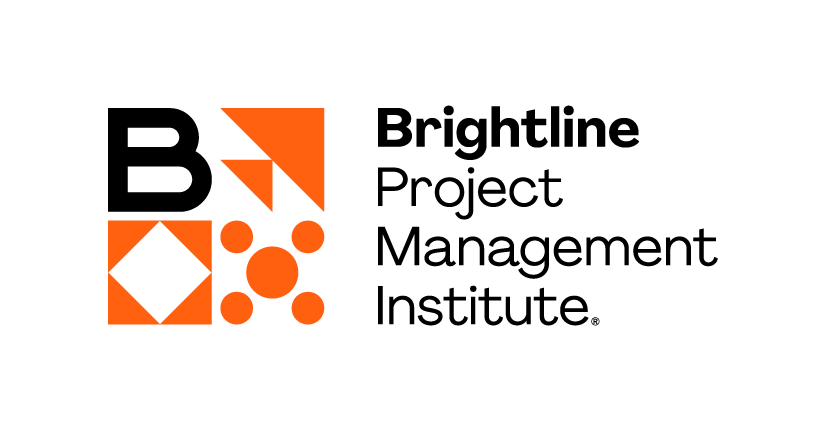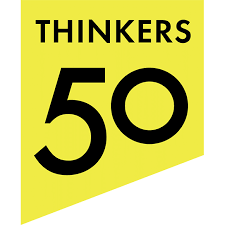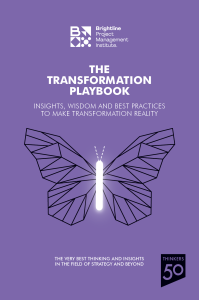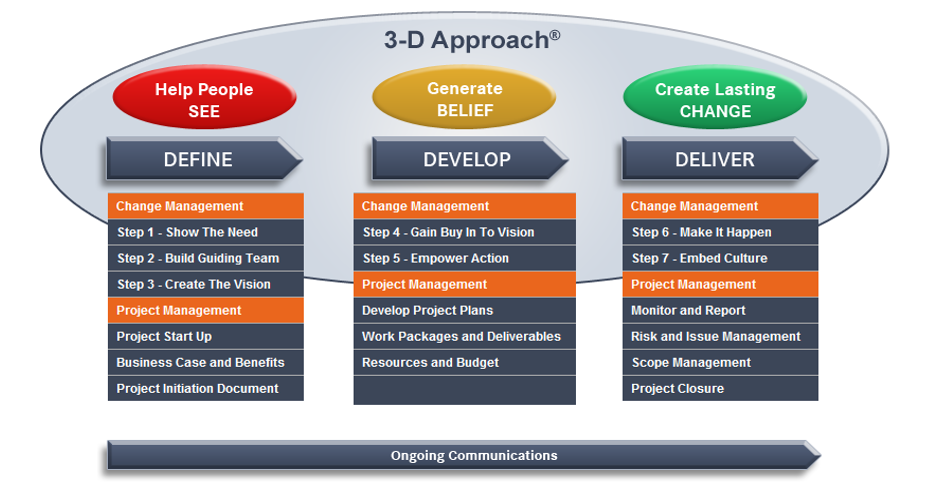The Discipline of Change
by Susie Kennedy & Andrew Bray
We are in the fourth industrial revolution, Industry 4.0. The speed of change is truly exponential, driven by digital technologies including artificial intelligence, robotics, cognitive technologies, autonomous cars, 3D printing, and many advances in science. It is a revolution involving a fusion of physical and digital technologies that impacts every part of our daily lives, creating vast possibilities as well as threats across all sectors and industries. Organizations must be more agile, transform more quickly in an atmosphere of urgency and uncertainty, and put the human dimension at the forefront of creating higher performing learning cultures.


 Successful transformation remains difficult to achieve – research by John Kotter and McKinsey shows still only 30 percent of transformations are successful, even less in the public sector. Key reasons include:
Successful transformation remains difficult to achieve – research by John Kotter and McKinsey shows still only 30 percent of transformations are successful, even less in the public sector. Key reasons include:
- Lack of leadership of the change effort
- Failure to change mindsets of stakeholders
- Absence of an approach to managing the change
When organizations use effective leadership and apply a rigorous and structured approach, they are more likely to succeed. We find repeatedly that whilst some organizations may use a form of project management to manage change projects, few effectively integrate project management with change management.
An integrated approach to leading change
Over the past 25 years of change consulting applying Kotter’s renowned 8-Step Approach using the Project Management Institute’s methodology, we developed a practical approach for implementing organizational change that integrates Kotter’s model with the discipline of project management (PMI) and the psychology of change in a structured process.
Our 3-D Approach to Leading Transformation (Figure 1) focuses on people, processes and projects/programmes. Successful change is managed in three phases through a series of steps for leading change and managing change projects with ongoing communication throughout. This article summarizes the approach and provides examples of practices that lead to successful implementation of change.

Figure 1: The 3-D Approach to Leading Transformation. ©2019 KBA Solutions Limited. All rights reserved.
Phase 1 - Help people see
The initial phase of the transformation process involves three key steps to help people see the need for change and three elements of project management to get the change project off to a good start with ongoing communications to engage and change mindsets.
Step 1 involves helping people see things need to change in a way that engages them from the outset and starts to shift mindsets.
Step 2 involves setting up a guiding team of change leaders to lead the change effort and maintain ongoing change leadership.
Step 3 involves developing a vision of the future in a way that engages key stakeholders early on.
The change initiative is clearly defined using the business case with benefits identified and through the project initiation document (PID).
In practice these first three steps are managed through initial workshops with the guiding team. Strategic analysis tools are used to answer the questions, “Why do we need to change?”, “Who are our key stakeholders?”, and “How will this change benefit and impact them?” The answers help to create a credible narrative for the reasons, benefits, and implications of the change for each stakeholder group.
To build a vision of the future, change leaders should explore and agree the purpose of their organization or unit to anchor the visioning exercise by asking, “Why do we exist?” The process of answering this question creates meaningful focus and positive energy as leaders feel a sense of purpose and pride in their discovery. For example, the leadership team of the Research Division of the University of Cambridge were proud to say their purpose was to offer expert guidance on sponsored research funding to enable world-class research, rather than to process research funding applications.
Building on this energy, the guiding team can ask, “What do we want to be known for?” projecting forward to a relevant future time and imagining what they would want key stakeholders to say of the unit/organization. This discipline of visioning from stakeholders’ perspective allows the human dimension to be kept at the forefront of the transformation.
Integration of project management at this stage ensures common understanding of what the transformation must actually deliver and must be documented in the PID. The name of the initiative should be used to engage (not alienate) those involved – a name relating to business benefit rather the technology is more appropriate. At key planning sessions, change leaders should routinely update stakeholders on what’s happening and what to expect next.
Phase 2 - Generate belief
In the second phase of the change process there are two major steps to manage in order to generate belief in the vision and three key elements to develop the project plans and create momentum plus the ongoing communications.
Step 4 involves translating the vision into a change strategy, stating what has to be done, identifying quick wins, and getting more people involved in the process whilst communicating the vision.
Step 5 involves giving people reasons to believe in the change by identifying barriers; delivering quick wins; developing leadership capability; encouraging greater creativity and reviewing how the existing culture, processes, and structures fit with the new vision.
In parallel with the change steps, the project plans are developed, work packages and deliverables established, and resources and budget identified.
An effective way to engage more people as early as possible is to repeat the visioning exercises with employees. This creates a valuable opportunity for everyone to think more deeply about their purpose and what they want to be known for. In articulating the purpose and positive aspirations, employees feel emotionally engaged, believe their contribution is genuinely valued, and have a role to play in the transformation.
Change leaders under pressure to deliver and concerned that employees’ views might differ widely from theirs, may be tempted to “tell” rather than “ask.” This is a mistake, as McKinsey research shows that people are five times more committed to an outcome when they have an input to it. Also, if employees’ views on purpose and vision do differ, this is the ideal time to listen and understand why the differences exist. In our experience this is a rare but important opportunity. During a visioning workshop in a large public sector organization, the recently merged community care and housing divisions could not agree on a single purpose statement. This gave senior managers the opportunity to review their strategic alignment and recognize the need to focus on the needs of their common customer rather than on current service.
Once the vision statement is achieved, the guiding team work together to translate it into a high-level strategy map with objectives that enable projects, work packages, and deliverables to be identified, and responsibilities to be allocated. This activity helps build the guiding team as it is a challenging and energizing task, which results in a robust plan of action. Also, the strategy map creates clarity on a single page, which serves as an effective communication tool for stakeholders and monitoring tool for project sponsors. Legend has it that during the implementation of a new accounting system in the UK Ministry of Defence, then Prime Minister Margaret Thatcher carried the strategy map in her handbag!
Phase 3 - Create lasting change
The final stage of change involves two change steps and four project management elements to embed the change whilst communicating successes.
Step 6 involves delivering the change strategy; keeping momentum; refreshing the change team; and staying on track.
Step 7 involves embedding new behaviours and practices in the culture by creating mechanisms for reinforcing the desired behaviours.
Delivering the strategy involves project monitoring and reporting, risk and issue management, scope management, and project closure.
This phase of the change process requires focused leadership and discipline to maintain momentum as membership of the guiding team may change and other new exciting initiatives may divert attention and resources. Guiding teams that stick to the rigour and routine of regular meetings to monitor and communicate progress long after the initial glamour has faded, are more likely to deliver successful transformation.
Reinforcing desired behaviours to influence culture change should start with role modeling. The Heathrow Airport Safety Improvement team vision was to transform the culture of health, safety, and wellbeing for the 76,000 people working across the airport. They focused first on identifying and developing the desired behaviours that would enable their own health and safety specialists to influence others, updated job descriptions and amended recruitment processes to reinforce these new ways of working within the team.
Project monitoring should measure the actual transformation (as defined in the PID) not just the completion of activities – benefits achieved and behaviour change should also be monitored. Putting in a new IT system is not a success until staff are using it and embracing new ways of working. Such was the case for a luxury retailer who had to do more work on changing mindsets when it became apparent that staff, having received training on a new system, continued to revert to old manual methods.
The speed of change is increasing and organizations must transform quickly to take advantage of opportunities and mitigate threats that the fourth industrial revolution presents. Achieving successful transformation remains as difficult today as it was a quarter of a century ago. However, one in three transformations result from a combination of effective leadership to engage people and change mindsets, and the application of a rigorous structured approach to managing the change. Against the odds, leaders can increase their chances of delivering successful transformation by applying the discipline of change.
About the authors
Susie Kennedy is senior partner of KBA Solutions Limited, which she founded in 1993. KBA specializes in change leadership consulting and executive development. She is Programme Director for KBA’s Institute of Leadership and Management Strategic Leadership Programme for senior managers, with programmes at the University of Cambridge, Premier Foods, and nationally for UK Local Government at King’s College London. She is an executive coach to senior executives globally.
Andrew Bray is senior partner of KBA Solutions Limited. As a qualified Civil Engineer he managed construction projects for large design and construction companies including Balfour Beatty and WS Atkins. He has an MBA from Warwick Business School and consulted on major transformation projects at Deloitte Consulting. He is Programme Director for the Strategy and Implementation modules of KBA’s Strategic Leadership Programme.
References
- A Guide to the Project Management Body of Knowledge (PMBOK®Guide), 5th Edition onwards.
- Allas, T., Checinski, M., Dillon, R., Dobbs, R., Hieronimus, S. & Singh, N. Delivering for Citizens: How to triple the success rate of government transformations, McKinsey Report, May 2018.
- Beer, M. Eisenstat, R.A. Spector, B.A, “Why change programs don’t produce change”, Harvard Business Review, November 1990.
- De Smet, A., Lurie, M. & St. George, A., “Leading agile transformation: The new capabilities leaders need to build 21st-century organizations”, McKinsey Quarterly, October 2018.
- Keller, S. & Aiken, C., “The inconvenient truth about change management”, McKinsey Quarterly, April 2008.
- Kotter, J. P., Leading Change, Harvard Business School Press, 1996.
- Kotter, J. P.& Cohen. D.S., The Heart of Change, Harvard Business School Press, 2002.
- Kotter, J. P., “Leading change, why transformation efforts fail”, Harvard Business Review, No. 73, 1995.
- Lawson, E. & Price, C., “The psychology of change management”, McKinsey Quarterly, June 2003.
- Jacquemont, D., Dana Maor, D. & Reich, A., “How to beat the transformation odds”, McKinsey Survey, April 2015.
- Schwab, K., “The Fourth Industrial Revolution”, World Economic Forum, 2016.
- “The Fourth Industrial Revolution is here – are you ready?” Deloitte Insight Report 2017.
- Wall, S., “The fusion of physical and digital worlds will improve experiences and inspire new technology”, Forbes, 15 February 2017.













